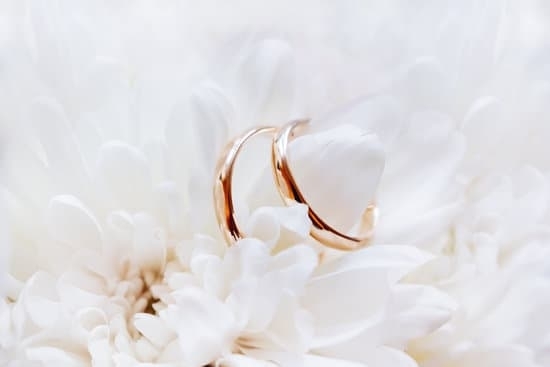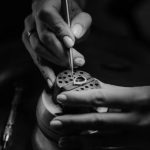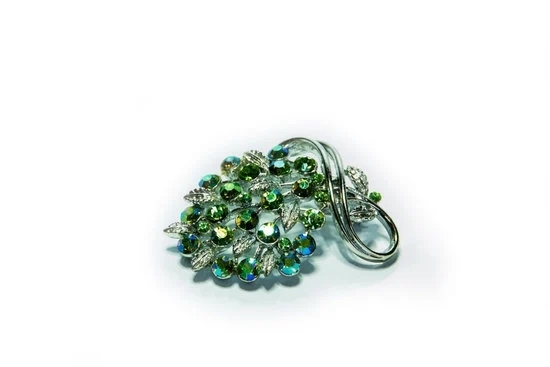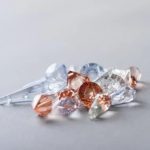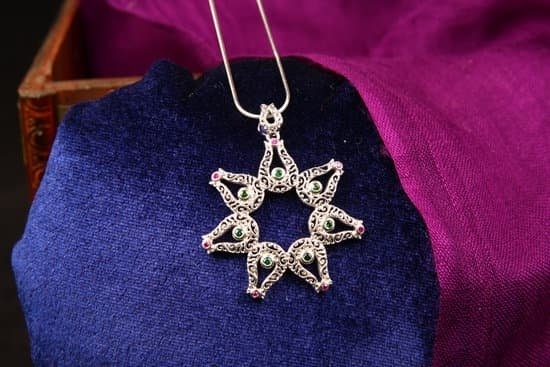Retro Period Jewelry refers to fashion accessories that rose in popularity during the 1930’s through 1950’s. Jewelry pieces from this era often encompass a blend of styles and elements that reflect both the art deco period and mid-century modern age. During the Retro Period, jewelry designers aimed to create unique pieces characterized by bright colors, geometric or abstract shapes, and eye-catching details such as enamel work and square-cut pave diamonds.
Style and Trends:
Throughout this period, many materials were used for making jewelry such as platinum, white gold, yellow gold, and other gems such as turquoise and opals. A particular characteristic of jewelry from this timeframe is its tendency to drawn on influences from many sources at once. Due to advances in technology during the Retro Period, new techniques became popular that enabled jewelers to design items with multiple colors or textures.
Popular stylistic elements included scrollwork designs, filigree accents, barrels of diamonds with pave settings, leaves with ribbons of diamonds adorning them ,and more. Additionally, pearls remained popular during the retro period as well with cultured pearls becoming increasingly accessible due to Japanese pearl farms harvesting them faster than ever before.
Legacy:
Jewelry from this period established decades of trends in jewelry design that still hold true today. Many pieces of rare vintage jewelry have become sought after collector’s items though some updated designs inspired by the era remain in production too into an increasingly larger variety all over the world.
The style “retro modern” is commonly featured in contemporary fashion magazines giving homage to classic vintage pieces from this time frame. It appears that even though years fly by that retro period jewelry will never lose its timeless appeal.
Design and Aesthetics
The aesthetic of vintage jewelry is celebrated for its unparalleled design, craftsmanship and style. Retro period jewelry pieces are characterized by bold lines and bright colors, while embracing the use of novel materials and techniques to create truly one-of-a-kind accessories. Although it may look modern, retro period jewelry made during the mid-twentieth century has become an enduring style over time.
Retro period jewelry was established during the 1950s and 1960s when new technologies – such as advanced machining and laser cutting – allowed designers to create more impressive pieces than ever before. This allowed for an array of unique designs featuring organic shapes, asymmetrical lines and vibrant colors. Necklaces crafted with colored stones, intricate earrings with dangling charms and statement bracelets were all prominent elements during this time period.
Along with remarkable design, materials from past times were also a major aspect of retro period jewelry aesthetics. Bakelite was one popular material that was used to create colorful pins in fanciful shapes like birds or butterflies.
For necklaces, brass mixed with rhinestones created a mottling effect that brought texture to any outfit. Not only did these types of materials spark interest, but their artisanal quality gave eachpiece a unique sophistication and flair unmatched by furniture or other decor pieces of the era.
Additionally, when shopping for retro period jewelry you’ll find everything from hand carved wooden links to painted glass pendants depicting images from nature’s wonderland; from brushed gold bangle bracelets to abstract shaped earrings featuring imaginative color combinations all indicative of an artist at work rather than mass production manufacturing techniques now widespread today.
Overall, the distinct visuals created during this era have remained captivating through out history making them timeless works art every individual can appreciate for years to come.
Interpreting Symbology
Retro period jewelry was popularized in the 1930s and 40s when attention was shifting away from more traditional, heirloom pieces such as pocket watches and gold pins. At the time, newly available materials including plastics and metals made it possible to manufacture bolder, more edgy jewelry that referenced art styles from throughout history. As a result, many of the pieces from this era often came decorated with vibrant colors and symbolic designs that represented significant trends of the time.
The most common symbols used in retro jewelry were related to patriotism and spirituality, two concepts that were heavily discussed during the Great Depression. For instance, pieces featuring an American flag typically served as a reminder of national pride even during difficult economic times. Similarly, crosses or angelic images often became sources of comfort at a time when anxiety and worry plagued many families.
Animals such as horses or birds also made frequent appearances on these types of jewelry items due to their symbolic nature. In some cases, they might represent freedom because they have no sense of boundary in the natural world. Birds especially tended to be used frequently as they can symbolize peace, hope, and deliverance – all values that people of the past prized highly during their lifetime.
Other symbolic images employed during this period included celestial bodies like stars as well as geometric patterns like circles or squares which could represent eternity or physical protection respectively. Similarly, floral designs were very prominent in terms of iconography since flowers often symbolize femininity – something that was becoming increasingly important for women across America during the 1930s and 40s.
In conclusion; retro period jewelry was oftentimes much more than just an accessory for its wearer – it held significant meaning within society at that time. By looking beyond what we see on these items now and examining how each piece would have been interpreted historically gives us further insight into social attitudes back then while also offering us a connection to a very different generation that felt just as deeply about their lives as our own do today.
Successful Trends
The retro period is one of the most popular fashion styles today. From bold colors to unusual prints, these moments in fashion history are being revisited and relived by celebrities, influencers, and everyday people. One area of style that has seen a massive resurgence in recent years is retro jewelry. Retro period jewelry often features an eclectic mix of design elements such as patterned textures, geometric shapes, modernist baubles, and other decorative items influenced by eras gone by.
A great way to channel the look without having to invest in expensive pieces is to shop for vintage pieces or vintage-inspired designs from contemporary designers who specialize in period-inspired styles. Vintage jewelry is one of the most popular genres of Retro-period wear; it’s easy to find necklaces, bracelets, pins, earrings and other pieces that feature unique designs from all periods ranging from Victorian and Edwardian periods up through the 1950s.
When donning a modern take on Retro Period style, it can be helpful to keep your overall look simple and classic so that your jewelry stands out as the star feature. A crisp white linen shirt can be accented with a pair of brightly colored enamel earrings while eveningwear outfits are easily updated with featherweight chandelier drops or chunky plastic cuffs worn as statement pieces.
When wearing more playful Retro Period pieces like gem clips or daisy chains mixed with semi precious stones, it’s best to accessorize with simpler clothing looks like plain tailored trousers and black turtlenecks for a look that puts the focus on your eye-catching jewels. With some patience and plenty of experimentation you’ll find yourself creating countless stylistic combinations that reflect both past eras while still feeling uniquely modern.
Artisanship
Retro period jewelry is treasured around the world for its exquisite craftsmanship and unique design. This style of jewelry peaked in popularity between 1940 and 1980 and includes a wide variety of materials such as diamonds, silver, white gold, plastics, and Bakelite. As with many other pieces of vintage or antique jewelry, these items were produced by skilled artisans who understood how to take natural elements and transform them into something truly special.
When it comes to Retro period jewelry, there is an undeniable charm that accompanies each piece. From brooches to parures to pendants and more, there is no limit when it comes to designs from this era. The older the item tends to be, the more delicate it is likely to be due in part to the fact that machines have only made advances since then.
For example, brooches from the time period often feature intricate personalization in metal filigree contoured sculptures set against bold yet beautiful gemstones or enameled finishes. They make for stunning accents on any outfit given their often impressive size and ornate detail work.
Another factor that makes Retro period jewelry so attractive are the sentimental value that some pieces may hold for owners given they are likely family heirlooms or holds memories shared between pastime lovers of eras gone by. Each item processed used its own symbolism (such as flowers meaning luck) so wear can give off a specific message depending on which piece they choose to don.
It should also be noted that these beautiful pieces are still being created today honoring all the great things past artisans accomplished with their craftsmanship and creativity.
Rarity and Investment
Such is the case with retro period jewelry. Any piece of jewelry fashioned before 1975 can be classified as ‘retro’, but it is typically items produced between 1935 and 1960 which tend to spark a collectors interest. These beautiful works are not only collectible, they are also excellent investments as they often increase in value over time.
Retro period jewelry captures a moment in history – pieces reflect the era in which they were crafted and feature style elements that go back through history. As such, these pieces represent more than just fashion – they are tangible doses of nostalgia for a certain time period that will never come again.
Indeed, collecting retro era jewelry can be a great way to preserve something for future generations and their descendants who may appreciate its value then, much like it’s appreciated now.
There are a few different considerations to make when investing in this type of jewelry. One of the most important being scarcity – some makers produced limited numbers of pieces or have since gone out of business making them highly sought after by buyers and therefore increases their resale value significantly.
Color is also an important factor; vibrant colored stones such as aquamarine and tourmaline bring top dollar for example and bright metals such as sterling silver with intricate detailing add extra investment potential too. With vintage inspired designs being popular today, many jewelers are producing replicas of vintage pieces giving buyers two options depending on budget size – however, purchasing genuine antiques will still give the buyer increased returns on their investment grand scheme due to rarity.
Overall, investing in retro period jewelry has become an increasingly popular opportunity amongst investors due to both aesthetic appeal and flexibility when it comes to potentially making money. Its growing demand signals that prices won’t drop anytime soon allowing holders to reap the financial rewards associated with all genuine antiques that age with grace – high-quality craftsmanship paired with period design touchstones makes for one seriously valuable asset portfolio.
Ethical Sourcing
Retro period jewelry offers a captivating take on style that can foster self-expression and joy. Originating in the 1910s and lasting through the 1960s, retro period jewelry was characterized by an emphasis on bright colors, bold geometric shapes and ornate motifs.
Popular pieces included fine gold necklaces, jackets encrusted with jewels like diamonds and rubies, bangles bedazzled with multi-colored gemstones and dress clips of intricate designs. It was fashionable during this era to combine faux pearls or costume jewelry made of glass with luxury stones to create a unique look.
When searching for pieces of retro period jewelry to add oomph to your wardrobe today however, it is important to always consider ethical impacts in relation to where you decide buy them from. A dependable source for these antiques will not only allow you to build up an eye-catching collection but ensure that the story behind each piece of jewelry is associated with reputable sourcing practices.
While many retailers make efforts to purchase from trusted vendors that pay their workers a fair wage, offering retro period jewelry sourced from smaller independent sources may present more meaningful options if ethical production stands at the top of your purchasing priorities list.
Making sure that your pieces are purchased from vendors committed to honoring ethical values contributes to regulating global trade standards as well as helps stop unethical activities such as introducing knockoffs not reasonably associated with its original manufacturer. Additionally, opting for vendors whose primary goal is supporting traditional craftsmanship assists in preserving art historically produced throughout various different time periods while elevating local economies consequently impacting a wide range of communities positively too.
As such, consumers can find support in discovering regional jewelers who might specialize in copying antique designs beautifully crafted with contemporary techniques recognizing both their creative ingenuity as well their commitment towards sustainability practices.
Before delving into purchasing colorful classics from bygone times however make sure that the vendor upholds ethical values across its supply chain-tracking these processes helps guarantee that workers receive reasonable compensation for their labor ensuring everyone involved in developing beautiful accessories walkists away with respect.
Thus upon further inspection being able to request assurance on stamps like artisan-made may stem curiosity behind how specific items are sourced allowing buyers discernment when deciding which pieces capture their hearts best without compromising ones deep appreciation towards vintage trinkets helping us preserve timeless beauty while encouraging endurability moving forward too.
Care
Retro period jewelry is highly sought after and often comes with a hefty price tag. It features bold colors, intricate designs, and an unmistakable charm. However, because it was made before modern jewelry standards were established, considerable care must be taken when cleaning or repairing it. To ensure that it lasts for another lifetime or more, here are some best practices for properly caring for retro period jewelry.
When cleaning retro jewelry, the best and safest option is to use a damp cloth and soft bristle brush. Refrain from using any chemical cleaners as they may damage the vintage stones. While rubbing gently with a soft cloth can help remove dust from the setting, avoid pressing too hard as this may cause damage to older gemstones or weaker areas of metalwork.
When taking in your vintage piece for repairs, it’s important to remember that not all jewelers have the experience in working on pieces of this age and caliber. It’s important to seek out a qualified jeweler who specializes in vintage fine jewelry who can diagnose and repair the piece while still preserving its originality and integrity.
When contacting a jeweler make sure you provide them with a detailed timeline of specific repairs needed so they can make an accurate assessment of cost and time necessary to fix the item.
If your piece needs re-plating give special precautions to prevent further damage due to wear and tear on metal settings by requesting additional plating on high-friction areas such as clasp connections or edges which experience constant pressure from being worn against skin over time. Consider having antique stones removed from their setting before repair work is done so they do not become damaged by unscrupulous handling during repair services.
Finally, always look closely at any parts that need to be replaced or repaired; where possible retain original materials as these will maintain authenticity rather than opting for new replacements which detract from value due to age difference between materials used for repairs versus original creations made during the Retro period. By following these guidelines you will ensure that your vintage pieces retain their beauty and uniqueness long into future decades.

Welcome to my jewelry blog! My name is Sarah and I am the owner of this blog.
I love making jewelry and sharing my creations with others.
So whether you’re someone who loves wearing jewelry yourself or simply enjoys learning about it, be sure to check out my blog for insightful posts on everything related to this exciting topic!

